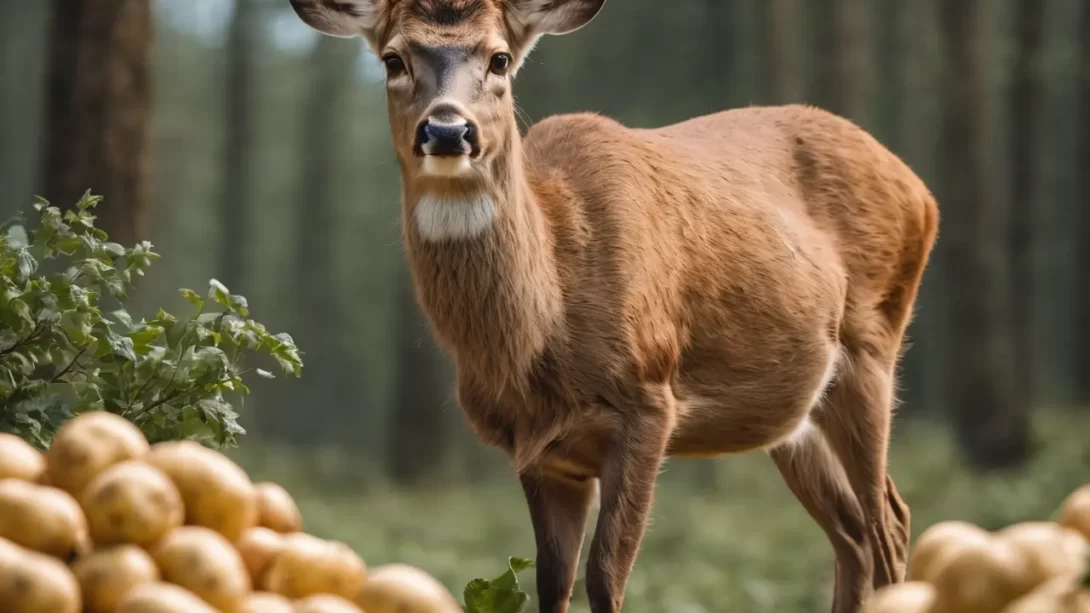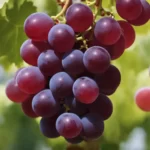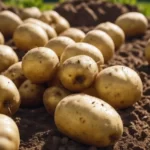Gardeners often find themselves grappling with the challenge of wildlife, particularly deer, in their vegetable patches. Potatoes, a staple in home gardens due to their nutritional value and versatility, are no exception. This article aims to address a key concern: are potato plants susceptible to deer? Understanding this can help gardeners take appropriate measures to protect their crop and ensure a bountiful harvest.
Deer Feeding Habits: A General Overview
Deer are opportunistic feeders with a diet that varies based on availability and preference. They primarily consume leaves, twigs, fruits, and nuts, but are known to adapt their diet according to the season and what is accessible. In spring and summer, deer often feed on lush vegetation, while in the fall and winter, they may turn to more available food sources, including garden vegetables. This adaptability makes them a particular concern for vegetable gardeners, as deer may target a range of plants, including potatoes.
Potatoes in the Garden
Potatoes, botanically known as Solanum tuberosum, are a favorite among home gardeners. They grow as underground tubers from leafy plants that appear above ground. The above-ground part of the potato plant is typically less appealing to humans but can be a target for garden pests. Potatoes are valued for their ease of cultivation and the significant yield they can produce in a relatively small space. They require well-drained soil, consistent moisture, and good sunlight to thrive. As a staple in many diets, growing potatoes can be a rewarding endeavor for gardeners, provided they can effectively manage potential threats from wildlife like deer.
Deer and Potato Plants: The Attraction
While deer are known to eat a wide variety of plants, their interest in potato plants can depend on several factors. Generally, deer may be drawn to the leafy green foliage of potato plants, especially when their preferred food sources are scarce. However, the potato tubers themselves, being underground, are typically not at risk from deer. Compared to other garden vegetables like lettuce or beans, which are often more appealing, potato plants usually fall lower on a deer’s list of preferred foods. Nevertheless, in situations where food is limited, or deer populations are high, they may turn to potato plants as an alternative source of nourishment.
Protecting Potato Plants from Deer
To safeguard potato plants from deer, gardeners have several effective strategies at their disposal. Physical barriers, such as fencing, are one of the most reliable methods. A fence that is at least 8 feet tall is generally recommended to prevent deer from jumping over it. For those who prefer less visually intrusive solutions, deer repellents can be an option. These products, either commercially available or homemade, typically work by emitting smells that deer find unappealing. It’s important to note that repellents need to be reapplied regularly, particularly after rain, to maintain their effectiveness. Additionally, gardeners can employ tactics like planting deer-resistant plants around the perimeter of the garden to create a natural barrier, or using raised beds, which can sometimes deter deer from reaching the plants.
Alternative Deer-Resistant Vegetables and Companion Planting
In addition to implementing protective measures for potatoes, gardeners can enhance their defense against deer by growing vegetables that are naturally less appealing to these animals. Vegetables like onions, garlic, leeks, and some herbs are generally considered deer-resistant due to their strong scents. Incorporating these plants into the garden can serve as a deterrent, potentially keeping deer away from more susceptible plants like potatoes. Companion planting can also play a role in this strategy. Planting aromatic herbs or alliums alongside or around potato plants can create an olfactory barrier, making the area less attractive to deer.
Designing a Deer-Resistant Vegetable Garden Layout
The layout of a vegetable garden can significantly influence its attractiveness to deer. By strategically placing more deer-resistant plants around the garden’s perimeter, gardeners can create a natural barrier. It’s also beneficial to keep potato plants closer to the house or in areas that are frequently used by people, as deer are typically wary of human activity. Raised garden beds can not only improve drainage for potato cultivation but also make it more challenging for deer to access the plants.
Conclusion
While potatoes are not the top choice for deer, their foliage can still be at risk, especially in areas with high deer pressure or limited food sources. By employing strategies such as fencing, repellents, companion planting, and thoughtful garden design, gardeners can effectively protect their potato plants from deer. Integrating deer-resistant vegetables and using layout techniques can also contribute to a more secure and productive garden. Embracing these sustainable and adaptive gardening practices allows for a harmonious coexistence with local wildlife, ensuring the vitality and success of the vegetable garden.




